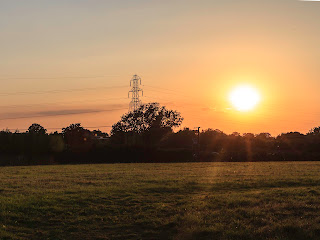It was not chosen originally for this purpose but because of the group of people on the right side of the image and the lines created by the preparation of the ground for sowing or at least I hoped it was for sowing! Taken using a tripod there were pointers to the location both where the photograph was taken from and within the image. The location was at the end of a narrow path leading into the field that broadened out and the shrubbery in the mid ground and on the right gave the appearance of permanency. The shot used was the result of cropping because I used a wide angle lens (24mm) to encompass as much of the scene as possible in one shot.
I returned in in January 2012 to the same spot. I had hoped for snow and one night about 2 inches fell in the area. As the location (Ickworth House) is only a couple of miles away I was able to make the journey quickly to maximise my chances of getting the desired images both for this project and the others for my portfolio.
Not surprisingly the ground markers for the location were practically indistinguishable because of the snow fall. However the shrubbery, now bare of leaves, provided enough clues to allow me to set up the tripod in roughly the same spot. Again I took a wide angle shot to allow for cropping so that the two images (Autumn and Winter) were as near as possible of the same scene. On returning home I found that I was slightly to the right of the original location but that the error was within the range that allowed for successful cropping.
The third shot was taken in the Spring of 2012 and locating the camera was not a real problem. A wide angle shot was taken with the intention of cropping. I had hoped that there would be some indication of a crop beginning to grow and although there were some tender shoots showing through they were so sparse that they were only evident if one looked closely. However the shrubbery and the trees in the distance were beginning to show their Spring foliage as can be shown by comparing the Winter and Spring shots.
The final shot of the quartet was taken in the Summer of 2012. Again location was not a problem although the growth of the summer foliage made for a quite different appearance. Using the same technique of a wide angle shot I was able to include the main elements of the image so that it was then a case of cropping to achieve the final image. The failure of the crop in the immediate foreground is not something that I would have normally included but did so because of the purpose of the exercise.
General comments - Whilst I feel that I achieved the aim of the Project which to make a record of one area throughout the Seasons and to show the differences the similarity of the images for Autumn and Spring requires some knowledge on the part of the viewer of what to expect in the two Seasons - the Autumn colours and the fresh leaf buds in the Spring. As always the photographer is very much in the hands of the elements.
What were the learning outcomes? Having lived through 72 rounds of the seasons I think it fair to say that I know that landscapes change throughout the seasons and in some landscapes quite significantly. I chose to use the same lighting conditions as far as possible because I felt that this would allow for comparisons across the seasons. 'Winter' was taken in overcast conditions as the probability of the snow lasting 'til when the sun came out was low. Would I have gained more from taking other shots in differing conditions such as rain that seemed to be the dominant weather during the early and mid-summer? The answer is that I do not know. Certainly I can speculate that the appearance of the images would have been different but in ways that would not be difficult to predict. As other exercises in the Course have shown the type of light throughout the day, the time of year and the nature of the sky has a marked difference in what the scene looks like even though the same fundamentals are there.
I assume that the photographer using film would have faced more difficulties in post-processing than I did using digital. I deliberately took wider shots than were necessary to include all the elements that were common to the four images. I then used software to crop so that the images were the same. Having done some pre-planning it was a simple task.
If I was creating a portfolio of my work throughout the Course without restrictions would I have included these images. The 'Autumn' shot would have stood a chance depending what else I wished to include but none of the others would, not because they are technically less than desired but I find them boring because they lack impact.
























